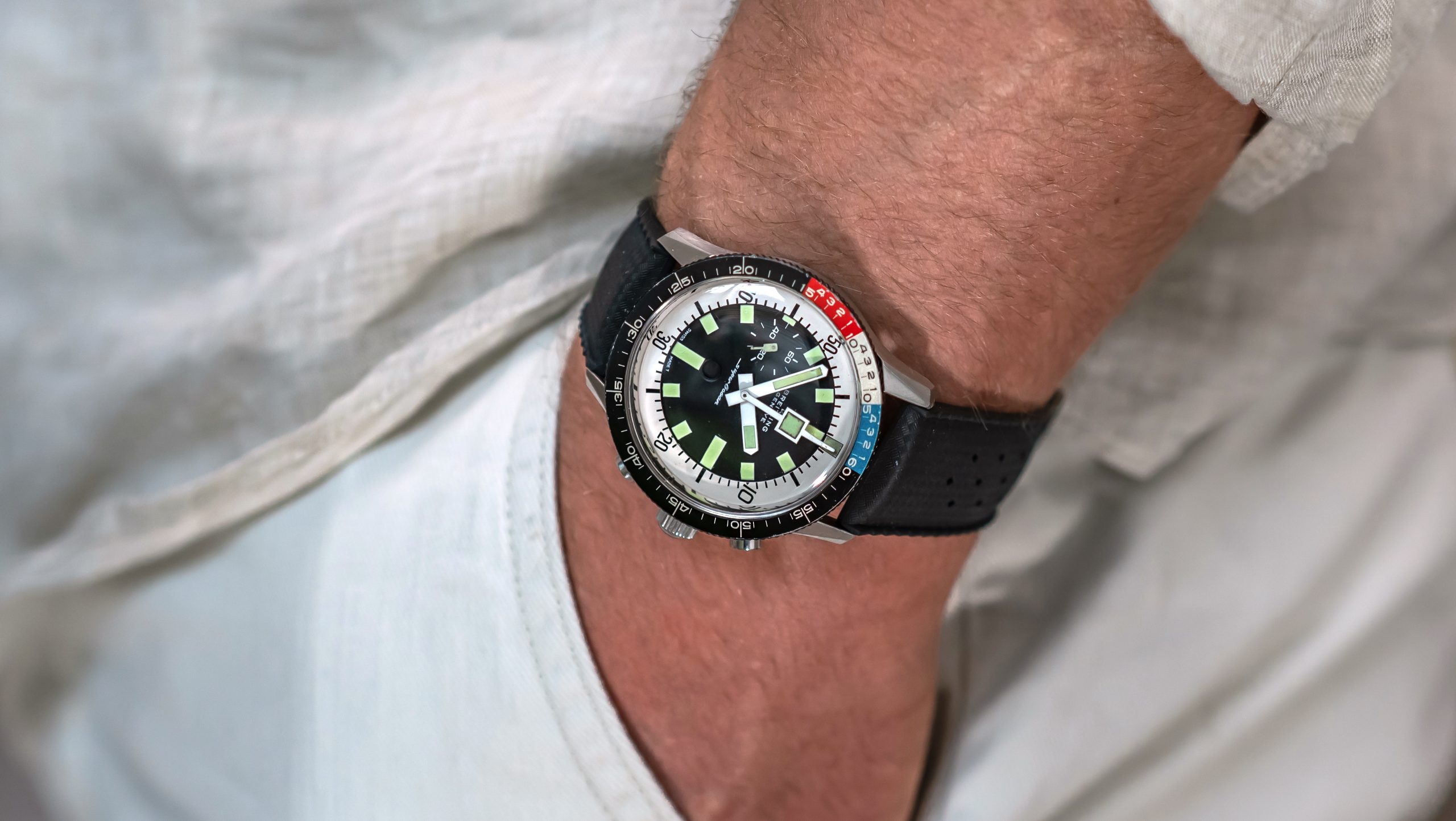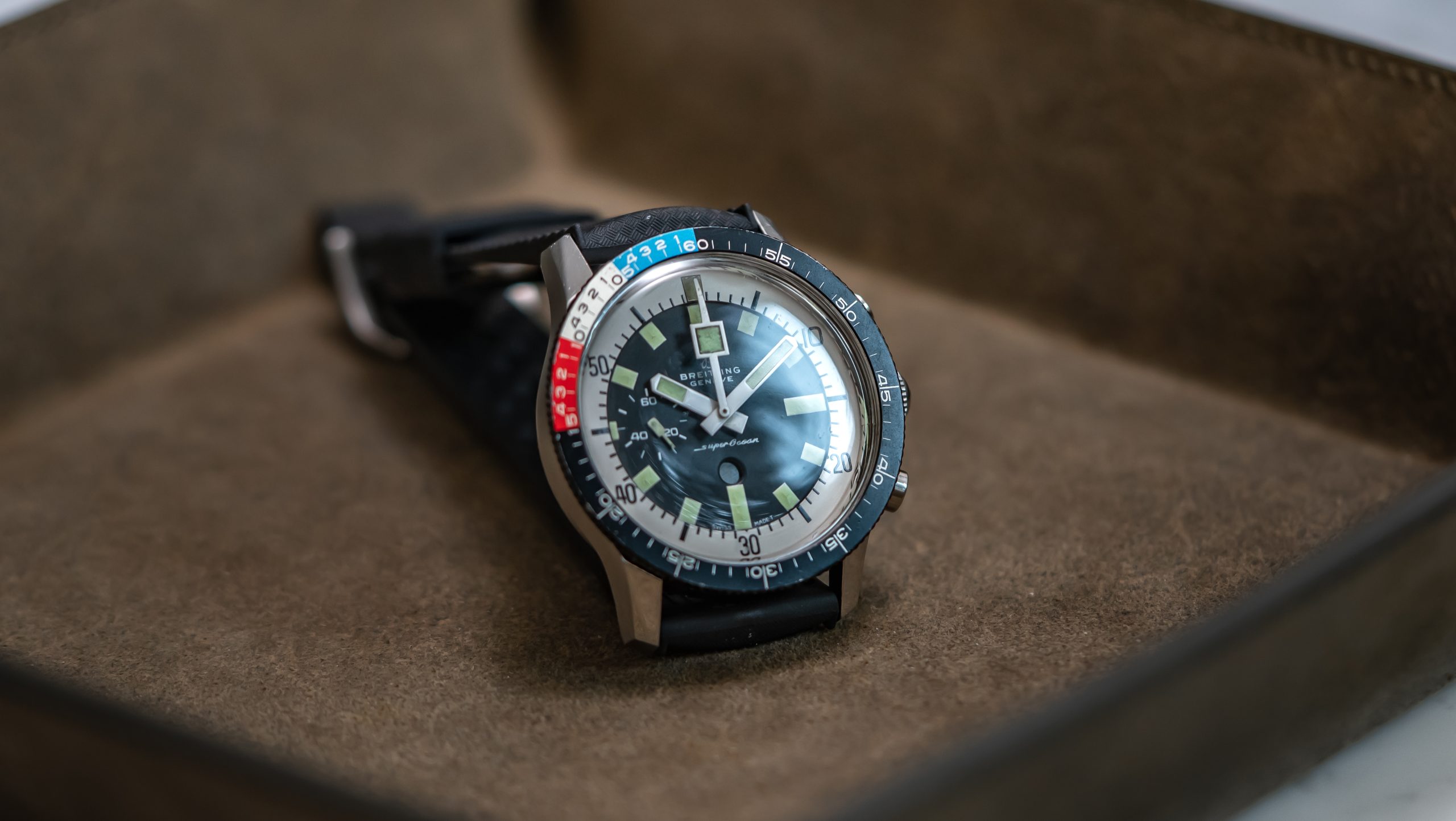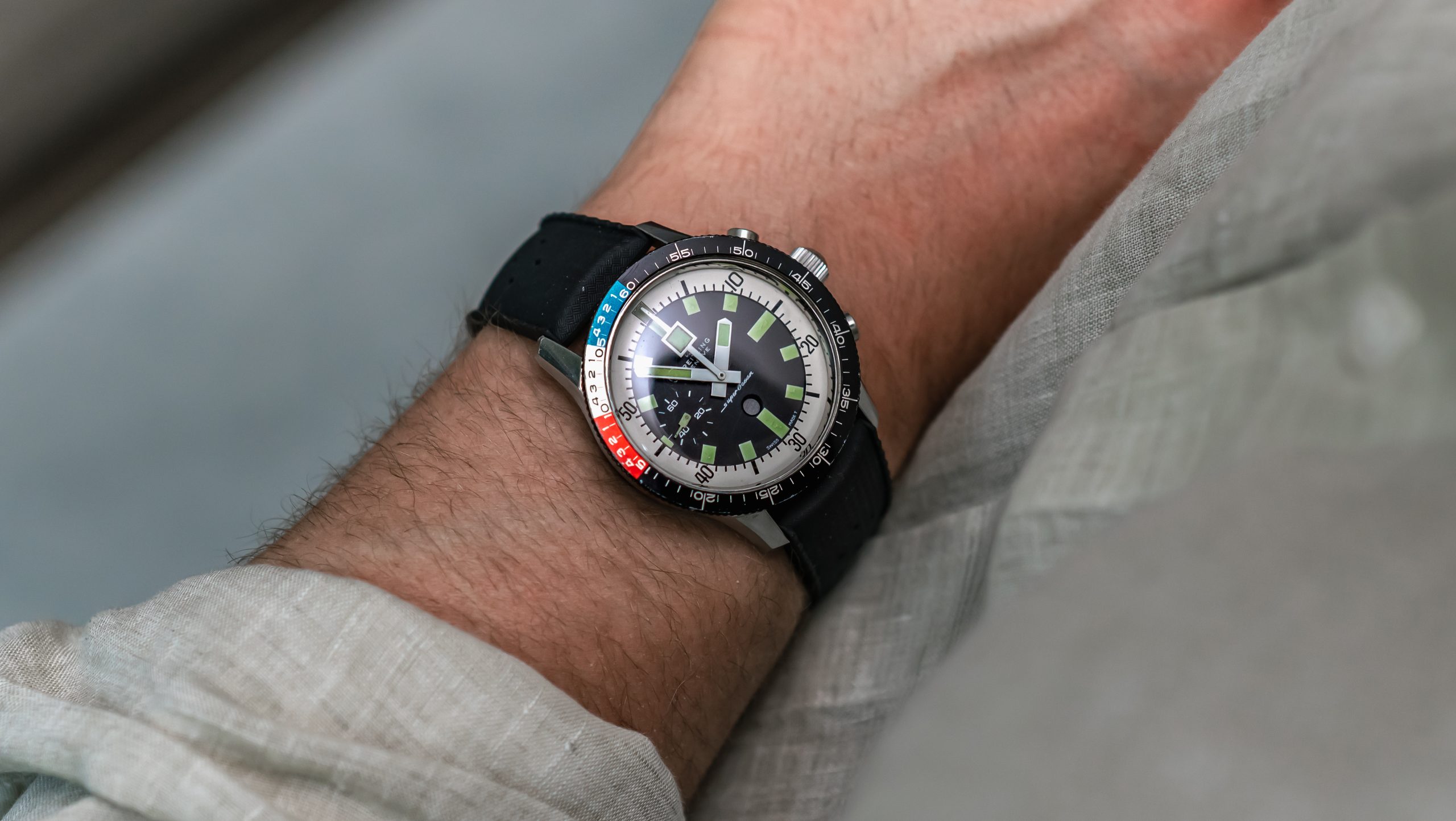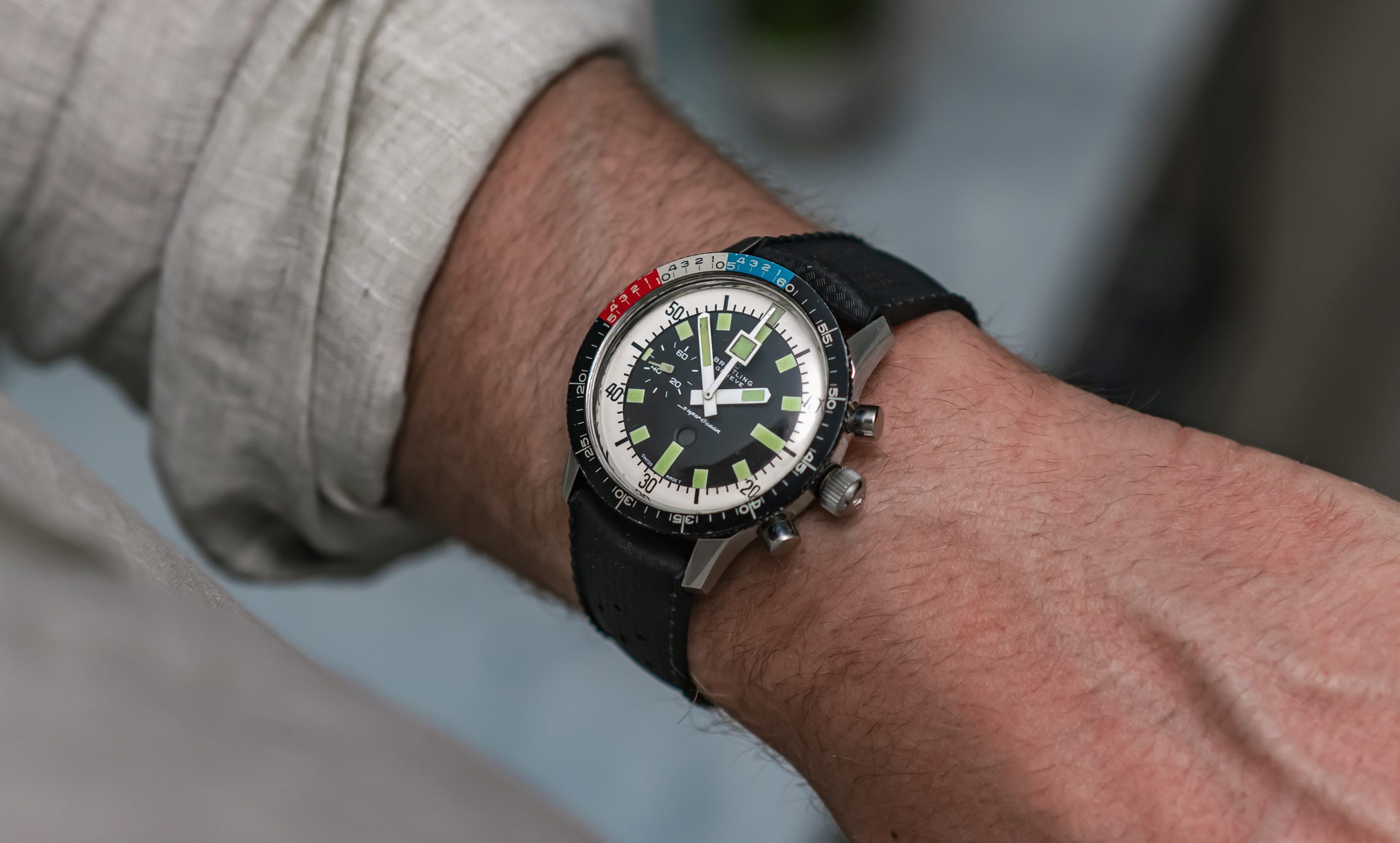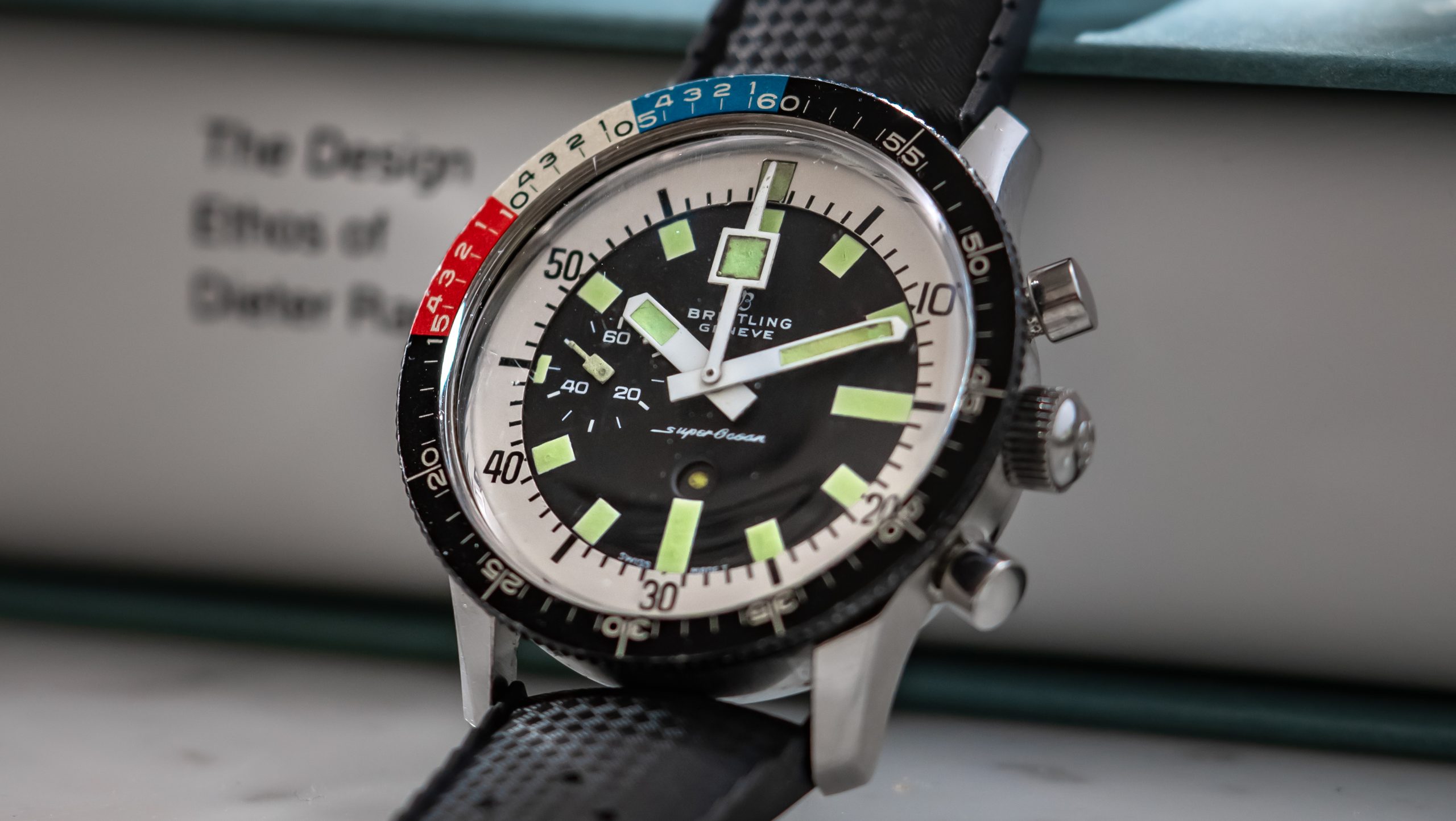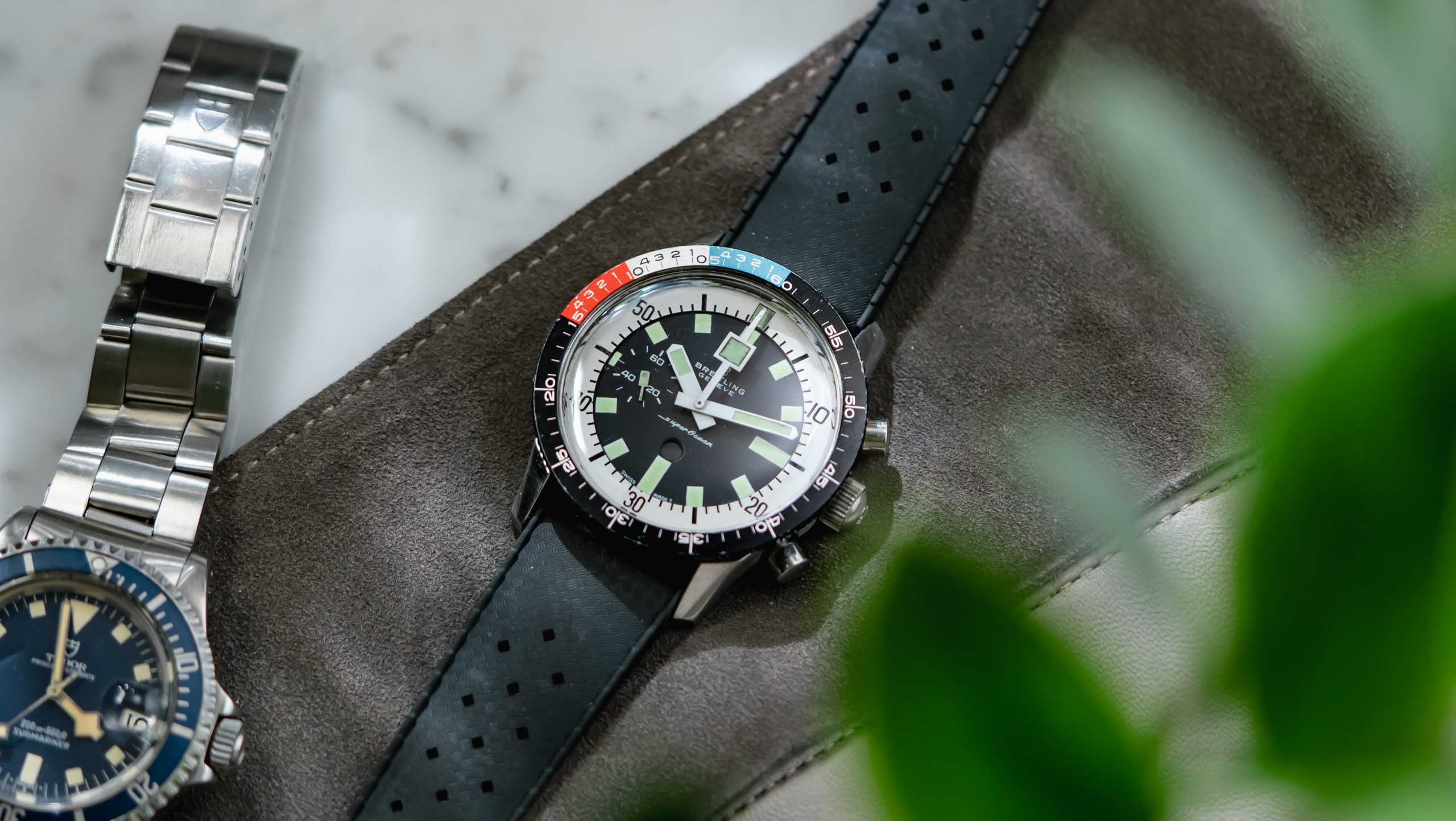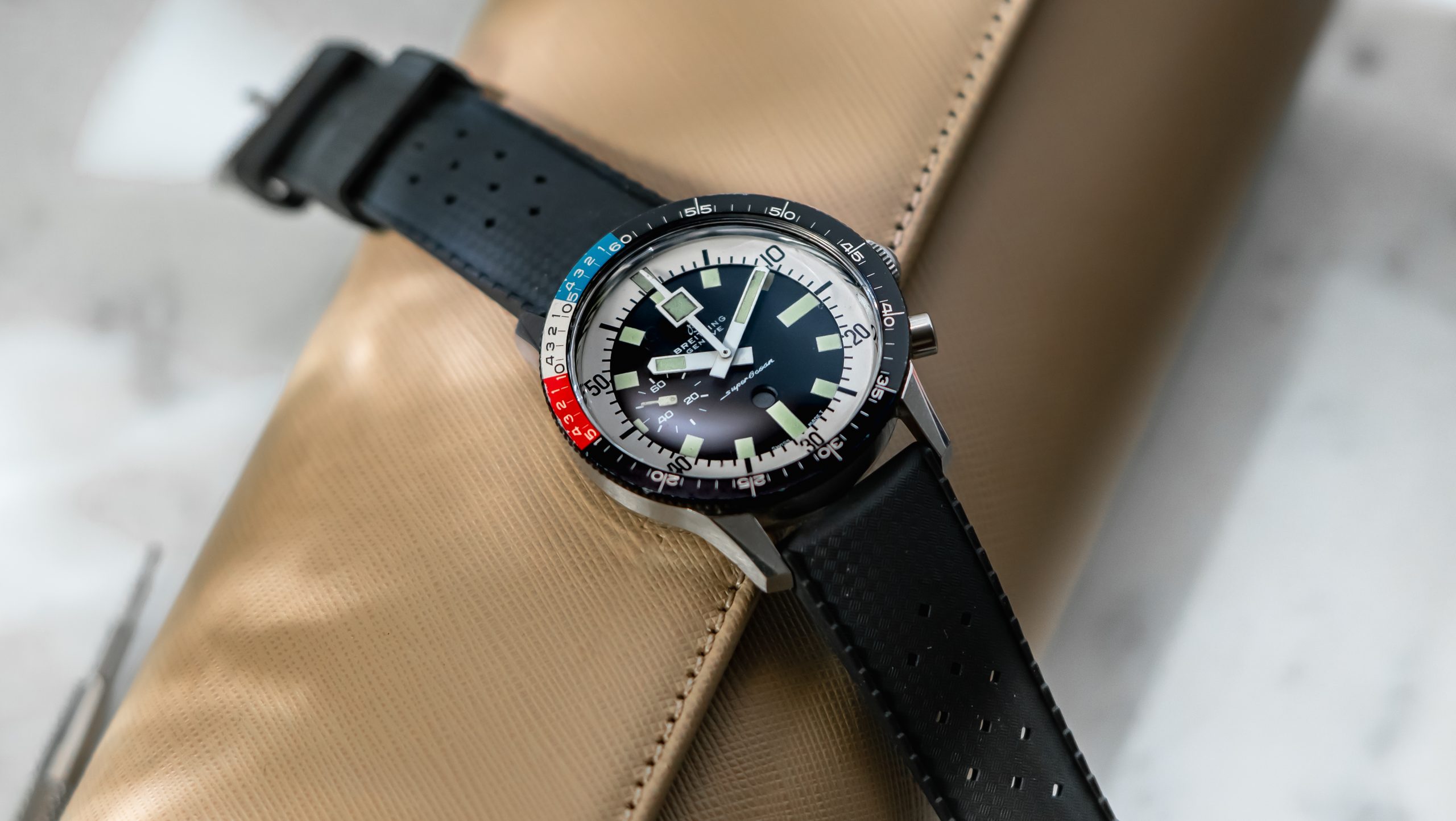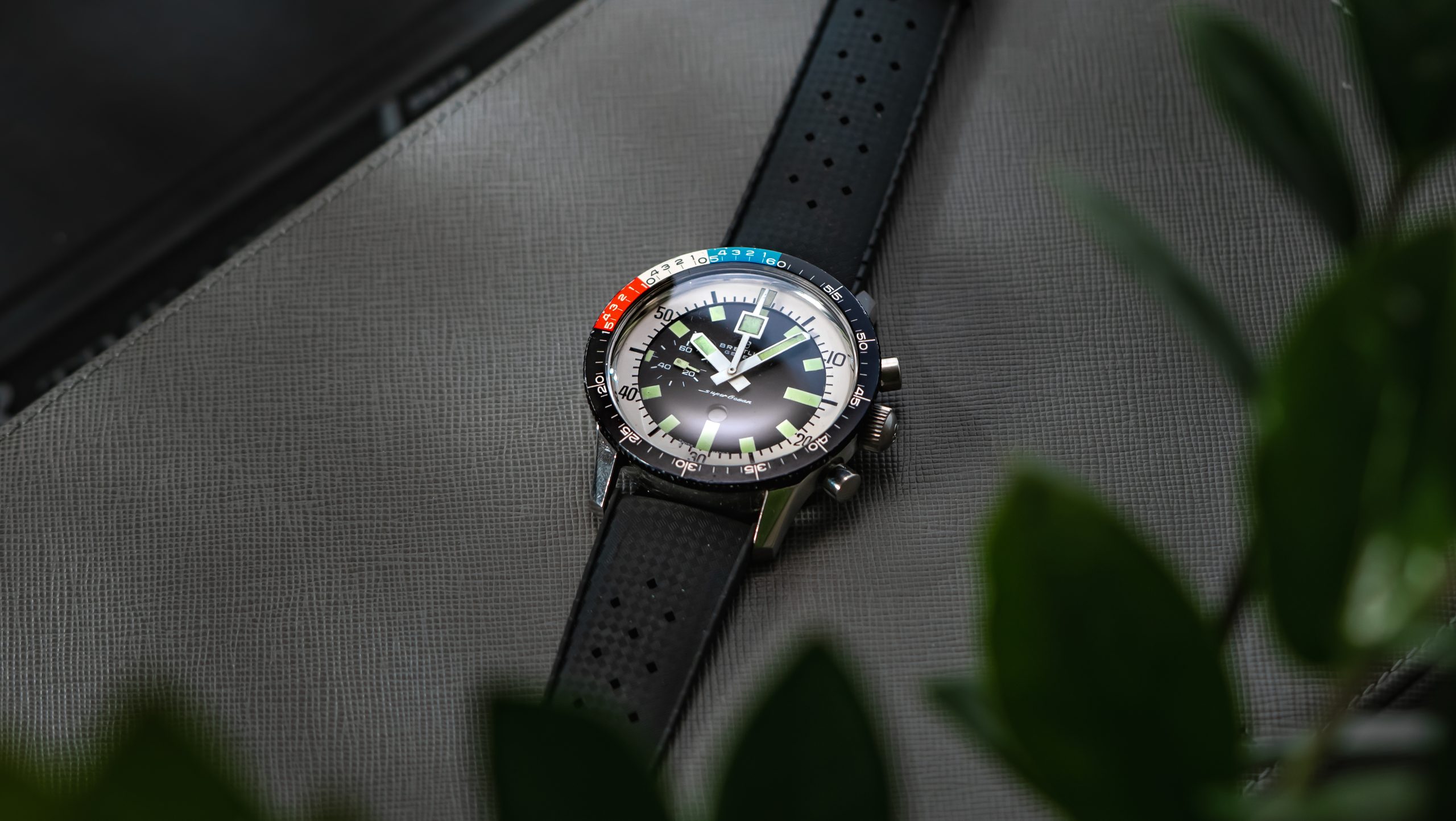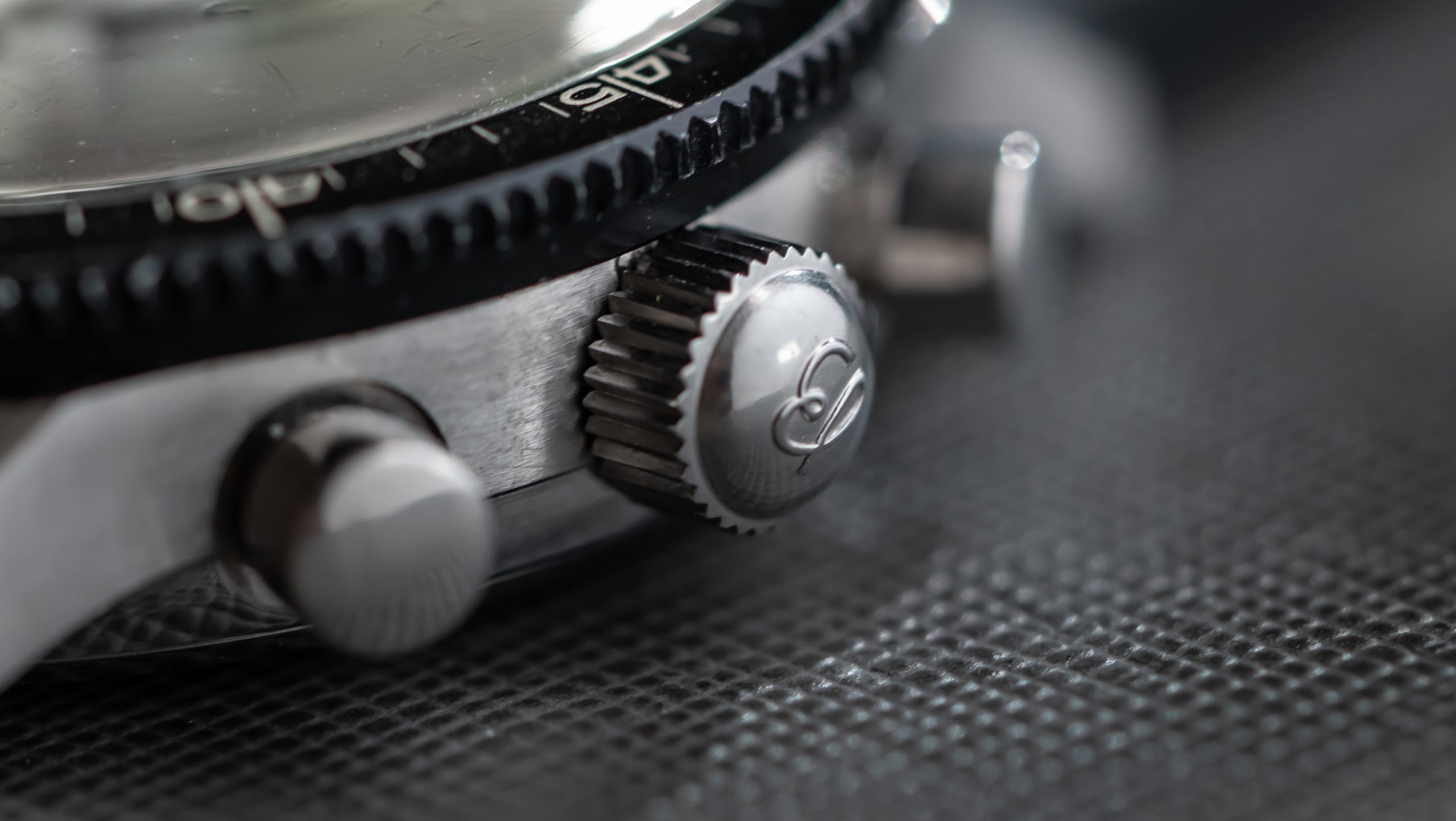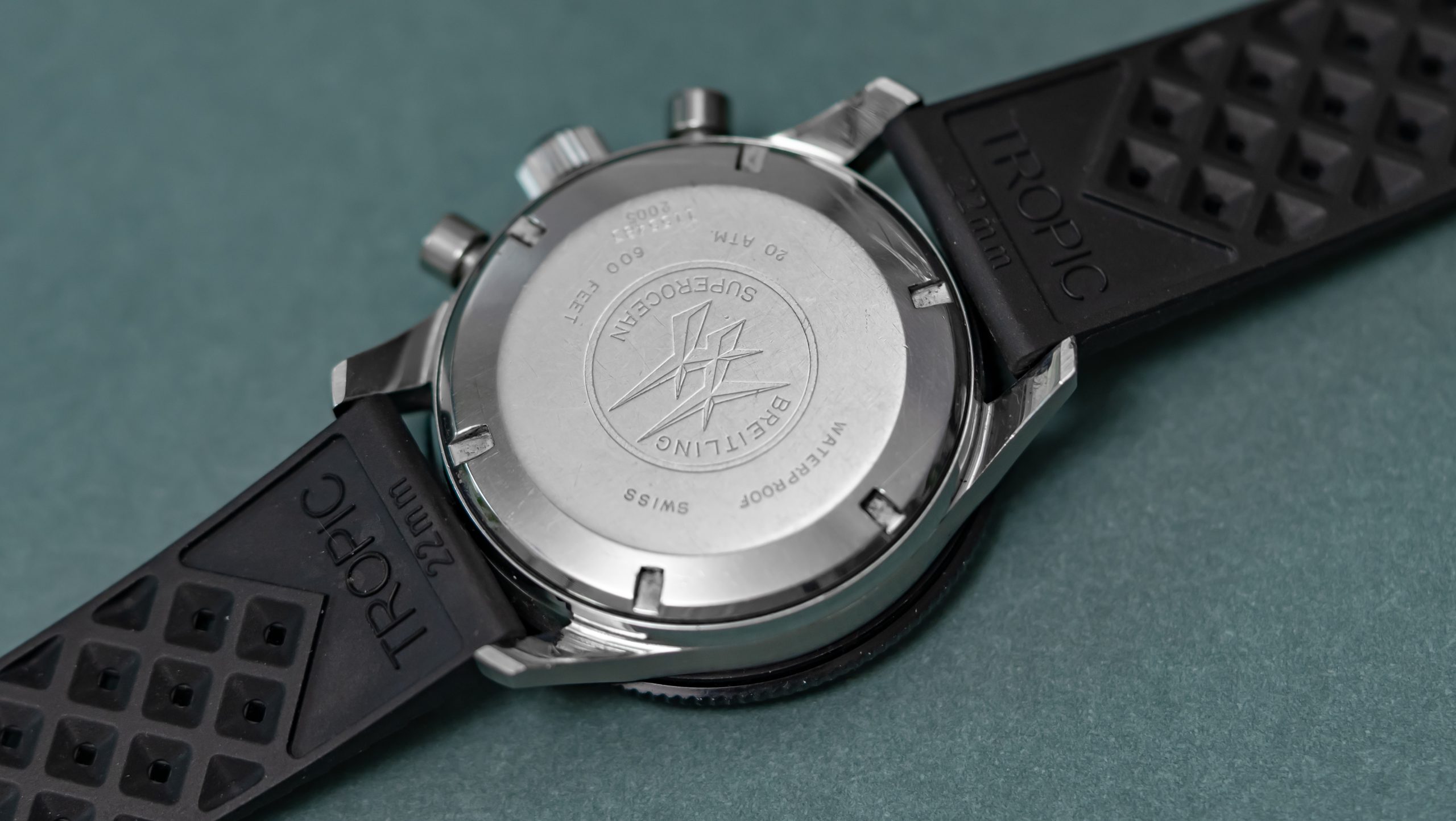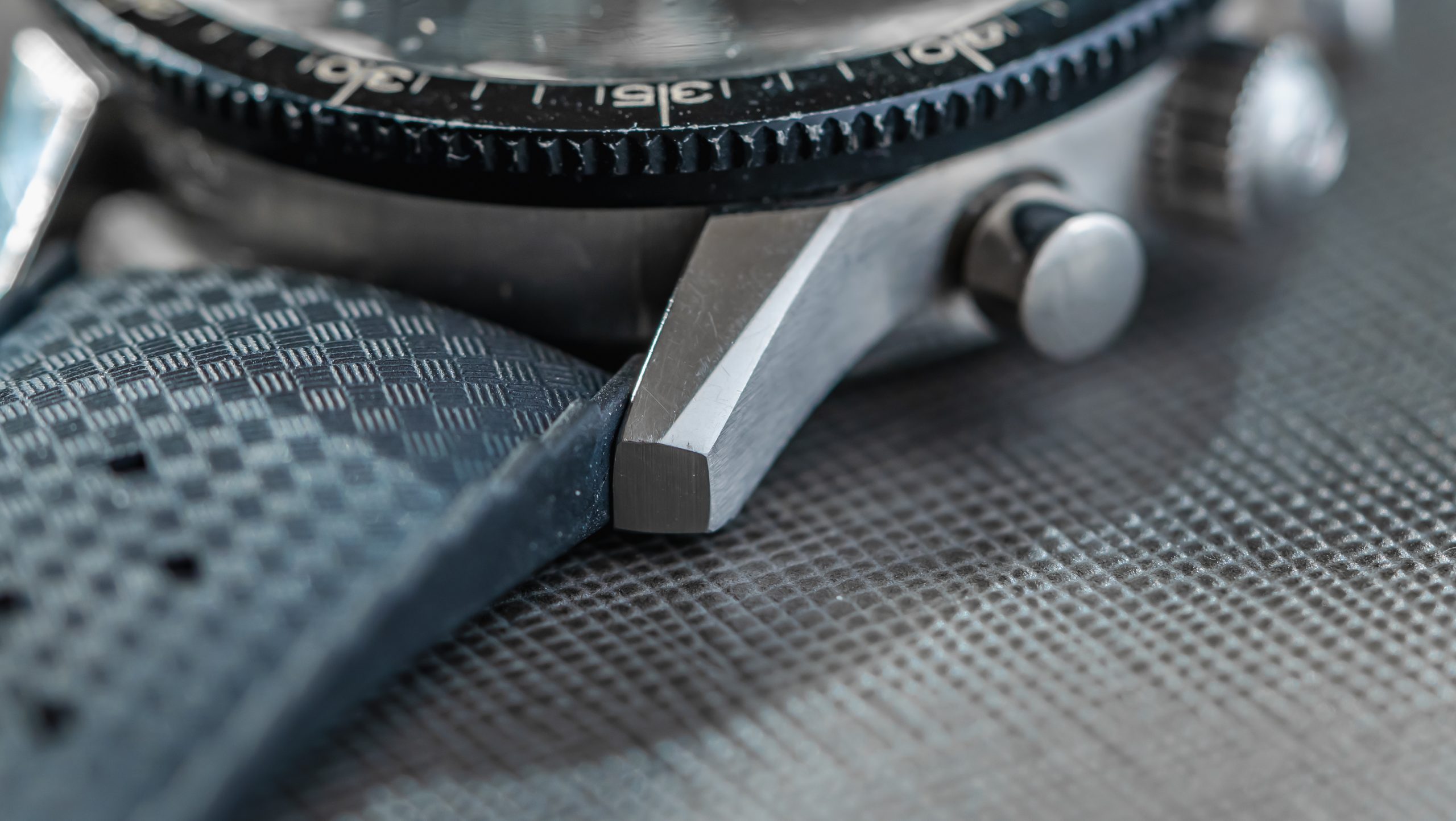Breitling's ref. 2005 Superocean was a different solution to the dive watch problem, eccentric and well thought-through. This is the scarcely seen second or 'Yachting' iteration, entirely original (lume as well, Breitling's tritium mix for these dials all turned minty over time, not re-touched) and in remarkable condition. It's known as the 'Slow Chronograph', that massive, blocky chronograph hand you see measures minutes, not seconds. In fact, it's so slow that there's a luminous indicator just above to 6 to tell you that it's running, because it's too slow for the human eye to detect; black for disengaged, full lume for running, a small lume dot for paused. With this flamboyant yachting bezel, it's one of the most playful and vibrant vintage chronographs to wear.
There are two known iterations of the 2005 Superocean, the first with a normal tritium blend, diamond-shaped chronograph hand, and circular plots. This second iteration came a few years after and included two major updates aside from design. First, a movement change from a modified Venus 188 to a modified Valjoux 7731, both manual. But also a running seconds in full lume, which is very useful. Both are in a very modern 42mm case. The tritium mix change came toward the very end of the first iteration, but all second-gen watches with this funky squared off handset and indices featured what we're calling the 'minty' mix. The second iteration also introduced this explosive yachting countdown bezel, which screams summer.
The 2005 Superocean is increasingly viewed as a collector's darling, one could scour the market for years and not come across an example like this, which is as well-preserved as we've ever seen; NOS is largely meaningless, but this thing looks like a drawer-queen. And the 2005 just so happens to have one of the best fonts ever printed on a dial. That Superocean script above 6 looks like it equally be milled from titanium and fitted on the back of some modern hyper car, it is truly a thing a beauty. As is the whole watch. Playfully beautiful, quite innovative, and a massively overlooked corner of Breitling dive history: what's not to love here?
